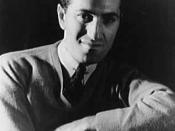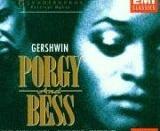Porgy and Bess symbolizes the end of the black musical tradition that flourished in the early part of this century. The play showed the height of white appropriation of what had previously been a black cultural form. All the creative talent backstage was white. This development had been occurring slowly, throughout the 1920's, but black artists had often worked in a variety of creative capacities.
'Porgy and Bess' became a 'black musical' in its most minimal sense, only as a definition of the color of the cast members. Neither the plot nor the music was of black origin.
Musical comedies seemed to be out of fashion in the 20's due to the dismal revivals of 'Shuffle Along' and 'Blackbirds'. Black dramas with music, and particularly spirituals, remained in fashion. 'The Green Pastures' is the best known example of this trend. As dramas about black life took on greater importance in the 1930's, they often borrowed from the musical comedy traditions of the 1920's.
Serious drama, about black life in the rural south or in northern cities, managed to blend music into its structure. In the 20's many of the dramas that had to do with black life, music became a necessity. In the 30's this trend prevailed, musical elements of Afro-American culture were showcased primarily in dramas rather than in musicals.
In Hall Johnson's 'Run, Little Chillun!', a folk drama about the conflict between the Christian and African religious heritage in black life, critics praised the marvelous choral music. While Johnson called his work a drama, Time suggested that he had written an opera, something rarely achieved or even considered by black artists working on Broadway.
Although the thought of an opera with a black cast and created by black talent was a rarity, it was not unprecedented.


